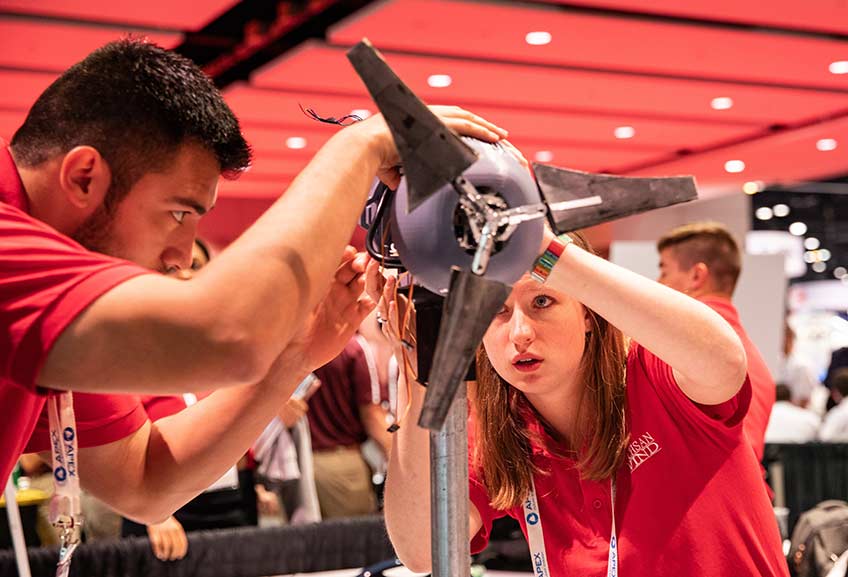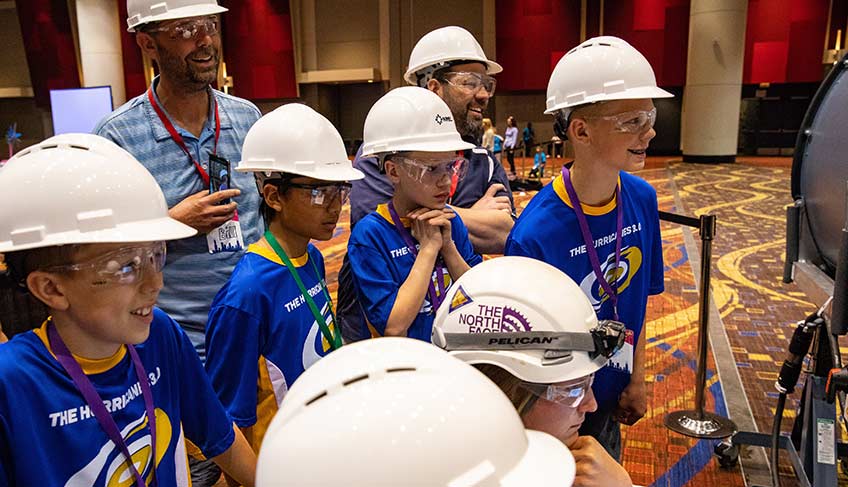Wind Workforce Webinar Series Offers Insights, Information, and Solutions
Industry, Student, and Research Perspectives Highlight Topics Ranging from Employer Needs to Educational Opportunities

Pursuing a career in the wind energy industry is placing a bet on a brighter, cleaner tomorrow.
To help industry recruit the best and brightest and to provide students with the essential resources to set them on a path toward a rewarding career in the wind energy workforce, the National Renewable Energy Laboratory (NREL), in partnership with the American Wind Energy Association, hosted a three-part Wind Workforce Webinar Series as part of American Wind Week.
“Ranging from industry experts to educators and students, speakers discussed wind workforce challenges, highlighted programs that are helping to develop the future wind workforce, and identified opportunities for industry members and others to engage in these ongoing efforts,” said Corrie Christol, an NREL project leader who organized the webinars.
Understanding the Lay of the Land
The series kicked off with the “Understanding the Energy Workforce” webinar.
Moderated by Suzanne Tegen of the Center for the New Energy Economy at Colorado State University, this two-part webinar first convened energy workforce experts to discuss the 2020 U.S. Energy and Employment Report, highlighted clean-tech employment, and explored impacts from COVID-19.
The second part featured NREL workforce analyst Jeremy Stefek, who presented preliminary data and insights from NREL’s most recent research study to understand the reasons for the wind workforce gap. This gap refers to the disparity between hiring companies not finding qualified applicants for open entry-level positions, and students not being offered jobs that allow them to enter the industry.
“Our research indicates that 68% of wind industry employers are having difficulty filling entry-level jobs,” Stefek said. “And on the potential workforce side, 55% of all students and recent graduates who responded to the survey reported having some or great difficulty finding a position within the wind industry.”
Educate Early and Often
The second webinar in the series, “Workforce Development in K-12 Education—Why It Pays to Start Young,” featured Rebecca Lamb from the National Energy Education Development Project. Lamb facilitated a panel discussion about the importance of and opportunities for industry and education partnerships in workforce development and early-age renewable energy education.

Among the panelists was Jaidyn Ramirez, a sophomore at Sonoma State University who is pursuing a physics degree thanks to her participation in the KidWind Challenge—a student wind turbine design contest funded through NREL by the U.S. Department of Energy Wind Energy Technologies Office's Wind for Schools project.
For Ramirez, workforce development began in the classroom.
“I fell in love with science and engineering and renewable energy in my high school physics class when I was able to participate in the KidWind Challenge, which gave me hands-on experience and an understanding of how what I'm doing in class is actually applicable within the real world,” Ramirez said. “Being in KidWind and building turbines that could power lights and pump water opened my eyes to the possibilities of what I could achieve. That really made me want to go into a career within the renewable energy sector—specifically wind power.”
Graduate and Undergraduate Preparation
The series concluded with “The Higher Education Pipeline: Solutions to Connecting Industry & Potential Workforce.” The two-panel session, facilitated by NREL Group Manager Elise DeGeorge, offered an opportunity for industry to learn about the undergraduate and graduate programs that prepare students for careers in the wind energy industry.
The first session highlighted programs that provide opportunities for wind research and development and hands-on experience, such as DOE’s Collegiate Wind Competition, which NREL organizes.
Heidi Tinnesand, a research engineer at NREL who specializes in wind energy workforce development, discussed ways industry can get involved with the Collegiate Wind Competition.
“If you're an industry member, you can come to any of our networking events, or reach out and we can connect you with fantastic skilled students to fill a job opening,” Tinnesand said. “You can also volunteer to mentor or sponsor a team.”
The second webinar session explored options for connecting industry with the future workforce. One such option came from panelist Jacobe Caditz of the Sacramento Municipal Utility District's Energy Education Technology Center. He discussed the organization’s Solar Career Pathways program, which works to increase employment opportunities in underserved communities by creating a partnership between community organizations, solar employers, and the electric utility.
At the conclusion of the webinar series, Christol summed up its value.
“Through this webinar series, we brought together industry, educators, and technical experts to support a robust wind energy workforce of tomorrow,” she said.
If you are interested in attending these webinars and learning more, you can access the recordings on NREL’s Learning Channel.
Last Updated May 28, 2025
